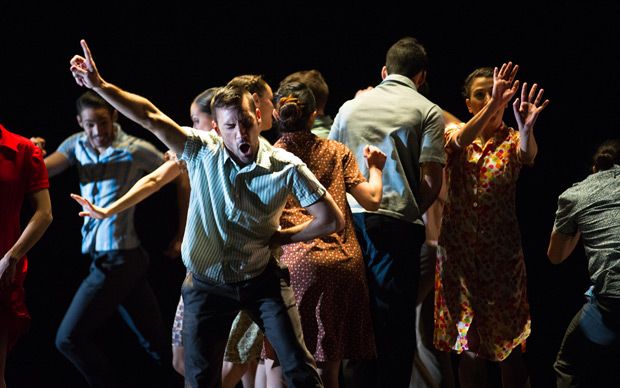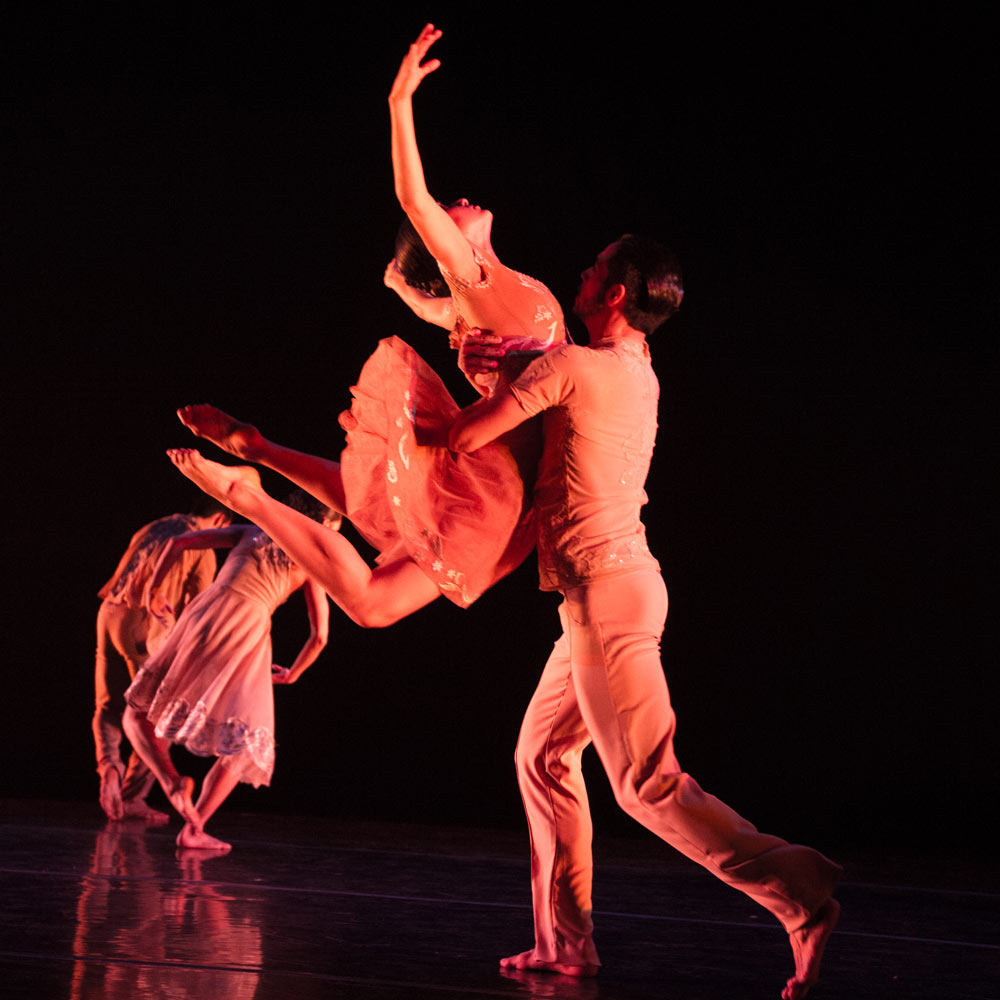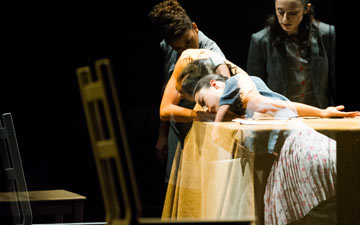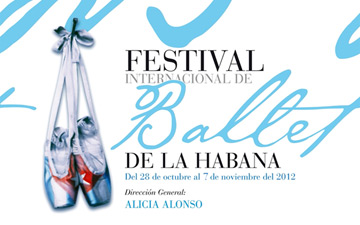
© Paula Lobo. (Click image for larger version)
Ballet Hispanico
Flabbergast, Bury Me Standing, Club Havana
★★★★✰
New York, Joyce Theater
5 April 2016
www.ballethispanico.org
www.joyce.org
Anyone in need of resurrecting their libido need look no further than Ballet Hispanico’s 45th anniversary season at the Joyce Theater. The triple bill is a sensuous and sass-filled program which, while not perfect, shows off the astonishingly diversified talents of this excellent troupe.
Set to Juan Garcia Esquivel’s mid-century cocktail lounge tunes, Flabbergast is a witty work by Spanish choreographer Gustavo Ramírez Sansano. Women wear ditzy housedresses, the men suits. Esquivel’s score sounds as if it is coming from a rickety record player, and speech is incorporated via pseudo-radio announcements or from dancers singing, yelling or gabbing. Exhibiting influences from the likes of Ekman, Bausch and Naharin, Flabbergast is nonetheless a dance work through and through, with just a pinch of theatrical pepper.

© Paula Lobo. (Click image for larger version)
Although Sansano set out to create a work inspired by his first arrival to America, Flabbergast – like all three works on the program – seems to be as much about desire as anything else. Guys and gals fantasize about each other. Pelvises thrust in ways both raunchy and playful. Mucha Muchacha is lusty, fun and sarcastic. Machismo is rampant; the men are thrillingly taut and together. The movement is often far-reaching, vast and swift, requiring rapid weight shifts, and shows off the exceptional nimbleness of the company. Dancers rebound from the lowest positions, and whirl around with windmill arms, voraciously consuming space. How successful Flabbergast is at communicating the “stereotypes and preconceived ideas about new and foreign places” listed in the program notes is less clear. Several sequences involve the cast walking across the stage with suitcases, meeting new people, and trying to make sense of things, but overall Flabbergast’s lingering after images (and emotions) are about attraction, and the bewilderment it brings.
Bury Me Standing is a pretty, dreamy, albeit lengthy work set to a mixture of gypsy and flamenco music. Choreographed by Ramón Oller and intended to be a tribute to Roma gypsy culture, Bury Me opens with a bare-chested Christopher Hernandez standing on stage. Smoke billows out from the fog machine and the bulk of the company slowly swarms at ground level in a constantly evolving mound of bodies.

© Paula Lobo. (Click image for larger version)
Moments of profound sensuality permeate the piece. Men nuzzle women off the stage – the men bending over, softly pushing their heads into the small of the women’s backs. Women leap onto men’s chests, and just at the point of contact, the women arch back with the fleet flicker of a butterfly. There is an entire pas de deux in which Christopher Bloom woos Diana Winfree from beneath her skirt, supporting her from the ground up as she perches and poses. Varying his support position – usually on his back, pushing his feet either into her abdomen, lower back, inner thigh – they achieve an endless number of poses in a soft, snoozy dreamscape. While memorable, after several of these feats, it turns into a quiet circus act, and one wonders if it would be more affecting, choreographically and emotionally, if only two or three lifts appeared as icing on the cake to a more complex range of movement.
In another sequence, women come onstage two by two on their knees, babbling nonsensically in high pitched voices, gesticulating wildly and making the sign of the cross before hissing like cats. They are later carried offstage like wooden crosses. Hands are raised to the sky with pleading motions. Given the inherent passion and intoxicating rhythms of the music, one wants Bury Me to be a Revelations in honor of Roma culture, but it wanders in scope and length and is just not quite tight enough. Still, Ballet Hispanico looks great doing it.
From the moment the curtain lifts on Club Havana, there is applause. Ballet Hispanico’s signature work is a popular one, and the suite of dances is a veritable ballroom medley of cha cha, rumba, conga and mambo, harkening back to mid-century Cuba. The dancers smile, swing and dish out sass in abundance. Pedro Ruiz’s suite, while thoroughly owned by Hispanico, could look very good on Smuin Ballet or Paul Taylor’s dancers.

© Paula Lobo. (Click image for larger version)
Women in cocktail dresses swivel in ballroom heels, smoke cigars and whip out tornado-like twirls of chaine turns. There are beautifully partnered attitude turns in deep plies, and the entire package is an ode to an era of social dance which no longer exists, a celebration of flirtation through motion. As performed by classically trained dancers, the ballroom moves take on an added elegance, lacking the forced flexed fingers of the competition world. Machismo is present without being forceful – here the men shimmy – and it’s hot. The swan like Eila Valls is almost too balletic, but none the less enjoyable for it. While this is what the company is most famous for, and they do it well, it is a breezy, unchallenging number. There is always a place for works such as these, but post-anniversary the company would do well to continue to capitalize on its dancers’ diverse, and unique, capabilities in technical virtuosity and emotional capacity – a pairing not seen often enough in many larger companies. The currents of emotion and sensuality are strong in this program, but in the hands of these dancers, never overbearing, melodramatic, or phoned in – they are too smart for that.

















You must be logged in to post a comment.